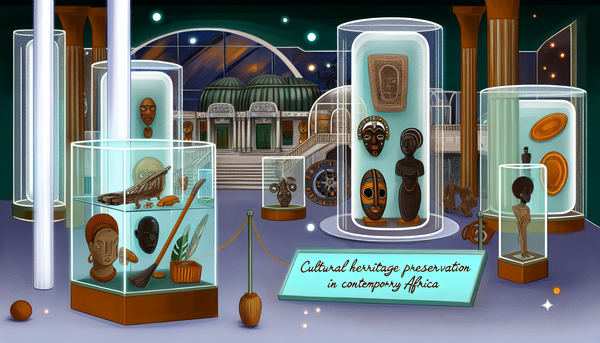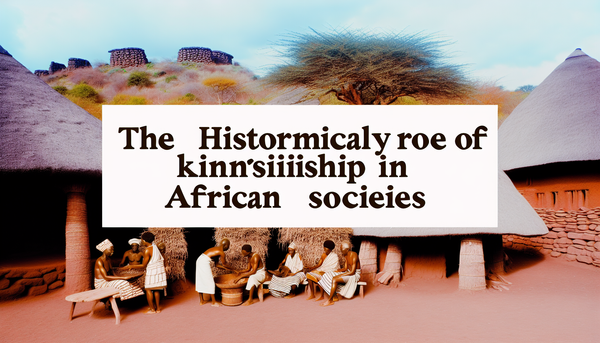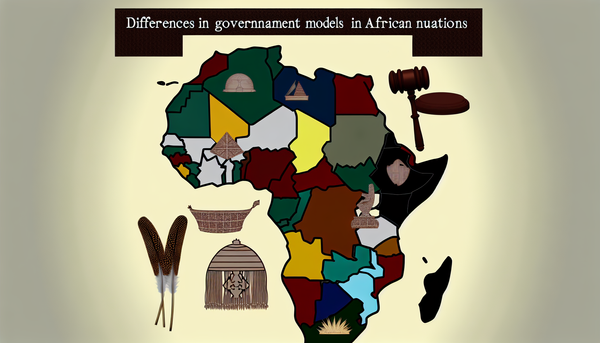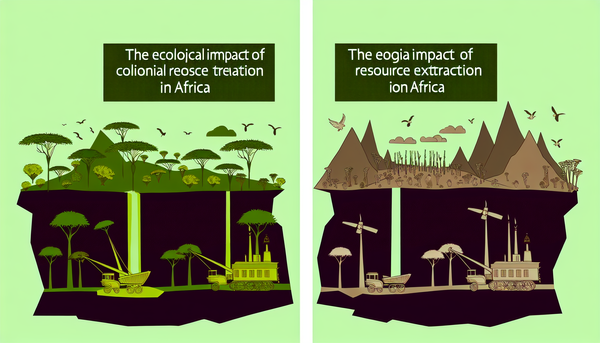Urbanization in Africa: A Historical Perspective
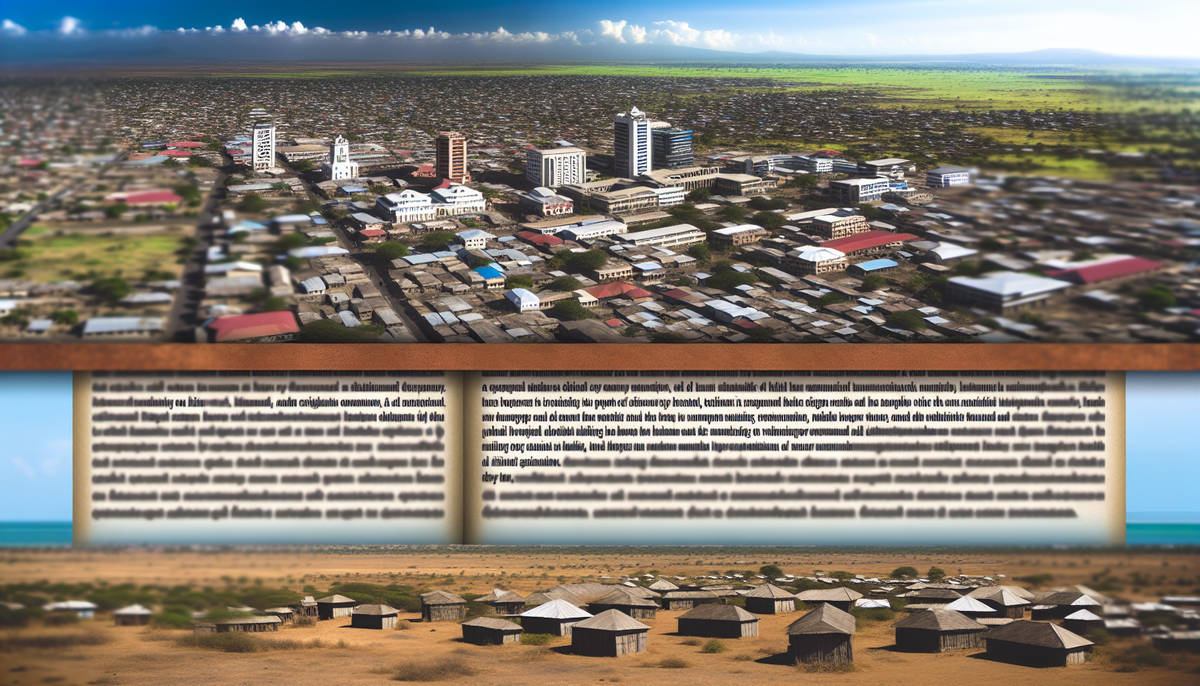
The Roots of African Urban Development
The origins of urban development in Africa can be traced back to ancient civilizations that flourished long before colonial influences. Historically, cities like Timbuktu, Great Zimbabwe, and Axum served as vibrant hubs of trade, culture, and knowledge. These early urban centers were strategically located along trade routes, facilitating the exchange of goods such as gold, salt, and textiles. They attracted diverse populations, fostering rich cultural interactions that laid the groundwork for contemporary urban identity.
Furthermore, indigenous governance and social structures played a vital role in the organization of these early urban settlements. Traditional leadership systems facilitated cooperation among communities, allowing for the establishment of essential infrastructure, including markets, religious sites, and educational institutions. The significance of urban areas as centers of administration and commerce cannot be overstated, as they provided a foundation for economic and political power within various kingdoms and empires.
As Africa experienced demographic shifts and social changes over centuries, urban development evolved. The interplay of local customs and foreign influences, particularly during the trade era, set the stage for the complex urban landscape observed today. Understanding these historical roots is crucial for comprehending current urbanization trends and the challenges faced by modern African cities.
Colonial Impact on City Formation
The arrival of European colonial powers in Africa marked a significant transformation in urban formation and development. Colonization disrupted traditional societal structures, leading to the establishment of new urban centers designed primarily for the convenience of colonial administration and resource extraction. Cities were often developed as focal points for European commerce, effectively reshaping the landscape of urban life.
Colonial authorities implemented a hierarchical system reflecting their interests, with European settlers located in prime urban locations, while indigenous populations were often relegated to peripheral areas. This segregation not only reinforced racial hierarchies but also limited access to urban resources for local communities. Infrastructure was predominantly built to serve colonial goals — roads, railways, and ports were constructed to facilitate the export of raw materials, leaving a lasting imprint on urban planning.
Furthermore, colonial cities were marked by architectural styles and urban designs that mirrored European aesthetics, contributing to a loss of indigenous architectural identity. The introduction of Western education and health systems also created disparities in access, shaping social dynamics within urban spaces. As a result, cities became sites of both exploitation and resistance, foreshadowing the socio-political challenges that would emerge in post-colonial Africa. This period laid the groundwork for the complex urban realities faced by contemporary African cities.
Post-independence Urban Expansion
The wave of independence that swept across Africa in the mid-20th century catalyzed rapid urban expansion as newly liberated nations sought to assert their identities and develop their economies. The end of colonial rule led to a surge in rural-to-urban migration, with many individuals flocking to cities in search of better opportunities, services, and living conditions. This influx resulted in unprecedented urban growth, often outpacing governments' capacity to provide adequate infrastructure and services.
In the immediate aftermath of independence, many African governments prioritized urbanization as a means of fostering economic development and national unity. Investment in industrialization and the establishment of public sector jobs in urban centers became vital strategies to absorb the growing urban population. Furthermore, cities emerged as arenas for political expression, with vibrant movements seeking social justice and equality gaining momentum.
However, this rapid urbanization also brought challenges. Many cities struggled with inadequate housing, burgeoning informal settlements, and infrastructural deficiencies. Services such as sanitation, healthcare, and education were frequently overwhelmed by the sheer volume of residents. The challenge of balancing urban growth with sustainable development became a pressing issue for nascent states. Understanding this era is crucial to addressing the ongoing urban challenges in contemporary Africa, as the legacy of post-independence expansion continues to shape urban landscapes today.
Modern Challenges in African Metropolises
African metropolises today face a multitude of challenges as they strive to accommodate rapid urbanization and growing populations. One of the most pressing issues is the proliferation of informal settlements, often referred to as slums. These areas typically lack basic services such as clean water, sanitation, and reliable electricity, leading to significant health and safety concerns for residents. The speed at which cities expand often outstrips the capacity of local governments to provide adequate infrastructure and services.
Traffic congestion is another critical challenge. Many urban areas suffer from poorly planned road networks, leading to severe bottlenecks and increasing travel times. This not only impacts daily life but also stifles economic productivity, as goods and services are delayed. Additionally, transportation systems are frequently underdeveloped, further complicating mobility within these urban spaces.
Environmental sustainability poses another obstacle, with pollution levels rising due to industrial activity, vehicular emissions, and waste management issues. Climate change exacerbates these challenges, making cities more vulnerable to flooding, droughts, and other natural disasters. Addressing these issues requires innovative urban planning, investment in sustainable infrastructure, and collaborative governance that involves all stakeholders to create resilient cities capable of adapting to future challenges.
Influence of Globalization on Urban Dynamics
Globalization has profoundly influenced urban dynamics across Africa, reshaping cities into interconnected nodes within a global network. As the world becomes increasingly interconnected through trade, technology, and communication, African metropolises are witnessing significant economic and cultural transformations. One of the most notable effects is the influx of foreign investments, which have stimulated growth in various sectors, including real estate, telecommunications, and finance. This has created job opportunities and contributed to the development of vibrant urban economies.
However, globalization also brings challenges. The rise of multinational corporations often leads to economic disparities, as wealth becomes concentrated among a select few, exacerbating social inequalities. Local businesses may struggle to compete with larger global players, leading to the erosion of traditional markets and crafts. Additionally, global cultural trends are often rapidly adopted, sometimes resulting in the marginalization of indigenous customs and practices.
Moreover, urban infrastructure is adapting to cater to global standards, which can overlook the needs of local populations. Architectural styles, public spaces, and transport systems can become homogenized, creating a disconnect from local heritage. Ultimately, while globalization presents opportunities for growth and development, it also necessitates a careful balancing act to ensure that the unique identities and needs of African cities are preserved amidst these sweeping changes.
Technological Advancements and Smart Cities
Technological advancements are pivotal in shaping the future of urban living in Africa, leading to the emergence of smart cities that leverage digital tools to enhance urban management and improve citizens' quality of life. These technologies encompass a wide range of applications, from data analytics and the Internet of Things (IoT) to artificial intelligence (AI) and mobile connectivity, enabling cities to operate more efficiently and sustainably.
Smart city initiatives aim to optimize resource use, enhance service delivery, and facilitate better governance. For instance, smart traffic management systems utilize real-time data to alleviate congestion, reducing travel time and lowering emissions. Public services like waste management and energy distribution become more efficient through digital monitoring, improving overall sustainability.
Moreover, technology fosters citizen engagement, allowing residents to participate in decision-making processes and report issues through mobile applications. This shift towards participatory governance enhances transparency and accountability.
However, challenges remain in implementing smart city technologies, particularly regarding digital divide issues, where unequal access to technology hampers inclusivity. Successful smart city initiatives must prioritize equitable access and ensure that technological solutions address the unique contexts of African cities. By harnessing technology thoughtfully, urban areas can advance towards vibrant, connected, and resilient futures.
Future Trends and Urban Policy Directions
As urbanization continues to accelerate in Africa, future trends and urban policy directions must adapt to address the complexities of growing metropolises. One significant trend is the focus on sustainability, with cities increasingly prioritizing green infrastructure and climate resilience. Urban policies are likely to incorporate renewable energy sources, sustainable public transportation options, and enhanced waste management systems to combat the environmental challenges posed by rapid urban growth.
Another vital direction is the emphasis on inclusive urban development. Policymakers are recognizing the necessity of integrating informal settlements into the formal urban fabric, ensuring that all citizens have access to essential services and opportunities. This requires innovative housing policies, land-use regulations, and community participation in urban planning processes.
Technological advancements are also shaping future urban policies. Smart city initiatives that leverage data and digital solutions to improve service delivery will become more prevalent, ensuring that urban management is efficient and responsive to residents' needs.
Moreover, collaboration across sectors—government, private, and civil society—will be crucial in addressing urban challenges. By fostering partnerships and encouraging citizen engagement, cities can create holistic and adaptable policies that respond to the dynamic realities of urban life. Ultimately, the future of urban policy must reflect a vision of sustainable, inclusive, and resilient cities for all.
